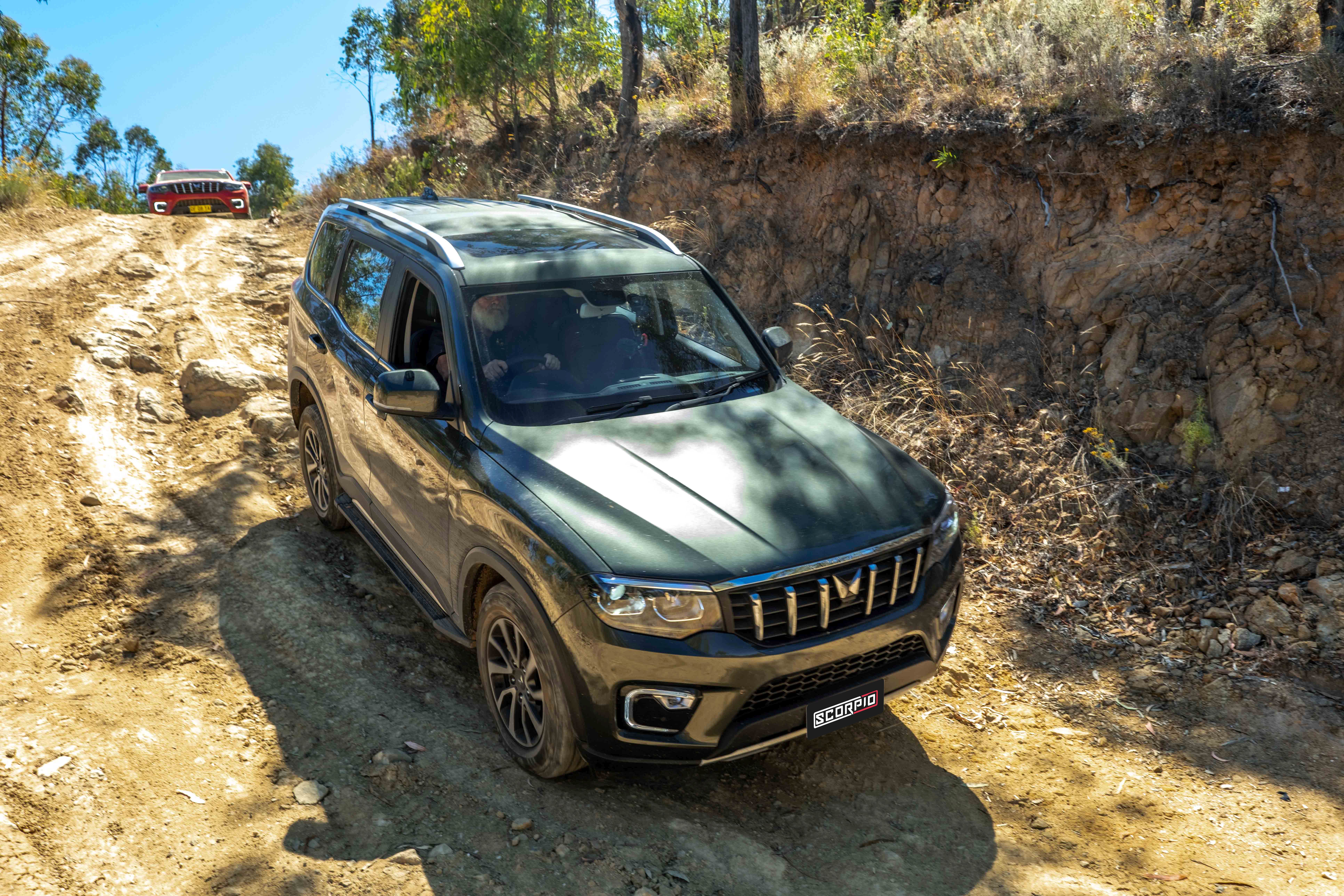Mahindra launches a bargain basement large SUV. But does it deliver all it promises? Here’s our launch review, with pricing, specs, ride and handling, safety, verdict and everything the over-50 driver needs to know.
Summary: The Mahindra Scorpio is sure to sell on its price alone and promise of almost immediate delivery, but the absence of many safety features might make intending buyers stop and think.
2023 Mahindra Scorpio large SUV
Pricing: $41,990 (Z8, driveaway), $44,990 (Z8L, driveaway). Until 30 June 2023.
Warranty: Seven-years/150,000km (private buyers), seven years roadside assist
Safety: 5-star GNCAP (Global NCAP), not ANCAP tested
Build location: India
Engine: 2.2-litre common rail 4-cylinder diesel
Power: 129W at 3500rpm
Torque: 400Nm at 1750-2750rpm
Transmission: 6-speed Aisin automatic, four-wheel drive
Body: 4662mm (long); 1917mm (wide); 1857mm (high)
Weight: 2085kg (Z8). 2100kg (Z8L)
Towing capacity: 2500kg
Wheels: 18-inch alloy
Tyres: 225/60R18
Spare wheel: Full size steel (18-inch)
Ground clearance: 227mm
Approach angle: 27.2 degrees
Departure angle: 21.3 degrees
Breakover angle: 23.5 degrees
Fuel tank capacity: 57 litres
Official consumption: 7.2/100km (diesel)
[review]
Mahindra is a name that may not be familiar to most readers but the arrival of its new Scorpio large SUV, diesel-powered and built on a ladder frame, may be about to change that significantly.
Earlier, we told you the details of this new arrival on the Australian market, and now, with the expiry of the embargo, we can tell you our drive impressions.
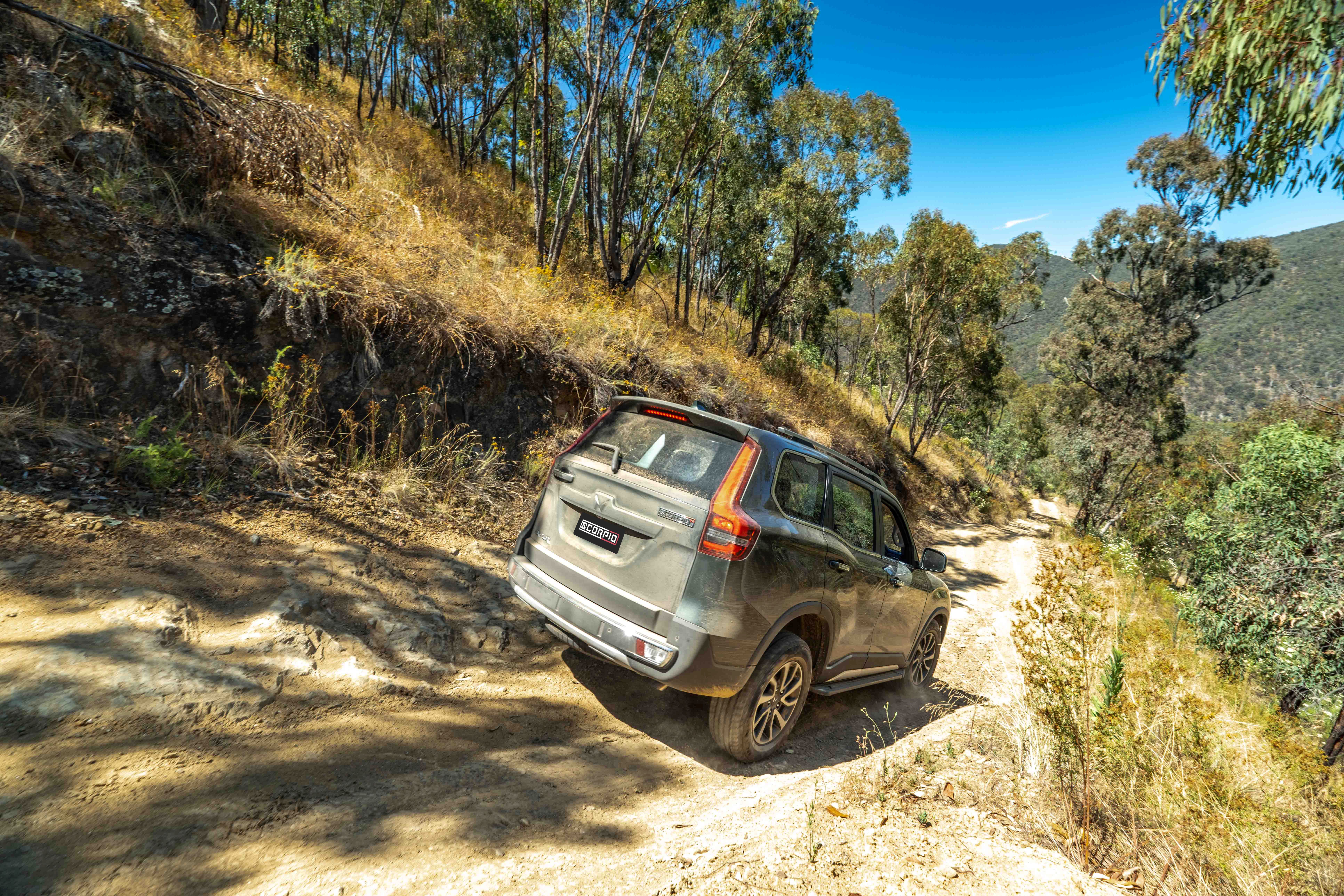
A large SUV. Really?
Definitions in different categories continue to confuse many buyers. The Scorpio is officially classed as a “Large SUV” despite being considerably shorter than other large SUVs such as the Toyota Prado and Ford Everest. In fact, it’s closer to the Subaru Forester.
It really only qualifies as a large SUV by merit of being taller than most others, so when you calculate its cubic size by measuring height, width and length it falls within the range.
At 4662mm long, the Scorpio is almost 300mm shorter than the Prado or Ford Everest.
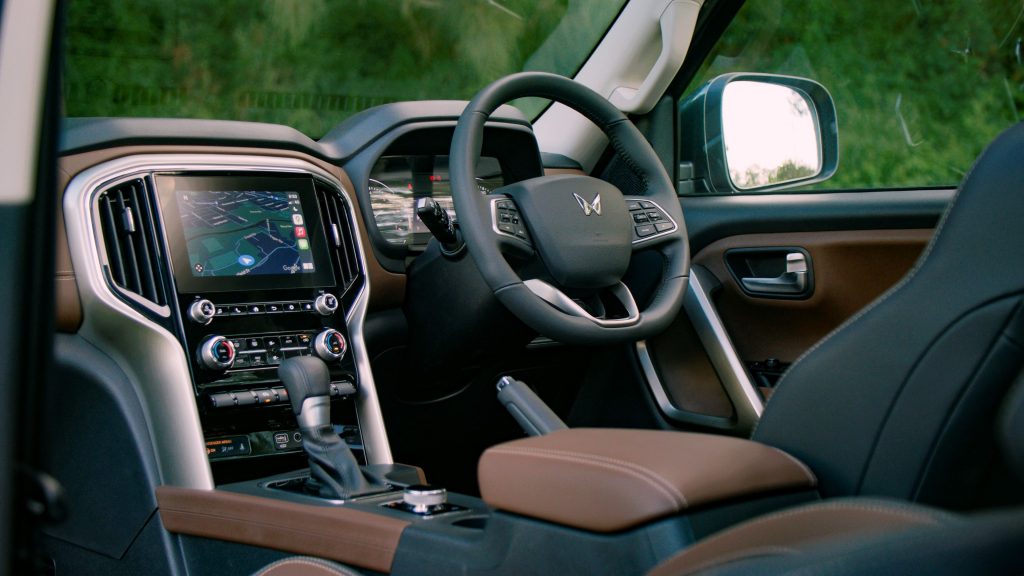
How well finished is it?
It’s easy to become overly critical, but everything needs to be kept in perspective. Stepping into the Scorpio, the first thing you see is the two-tone upholstery in coffee and black. If you don’t like it, tough luck – it’s the only interior trim on offer. However, it’s certainly quite attractive and won’t offend any but the most hard-to-please.
As you’d expect, there is quite a lot of hard plastics in the interior, although most of the touch-points use soft-touch materials. Look closely, though, and you’ll see some less-than-perfect fit, such as the trim panels on either side of the console.
The seats are finished in leatherette, which is entirely acceptable, and probably easier to look after than the fabric trim on most entry-level competitors.
The Z8L gets an electrically adjustable driver’s seat (six-way) while the Z8 makes do with a manually adjusted seat. Unfortunately, the steering wheel is only adjustable for height, not reach, but most people will manage to find a suitable driving position.
The seating position is high and combined with the quite upright windscreen and bonnet that falls away, the view ahead is excellent. In addition, the glass-to-metal ratio is quite high, creating a light and airy cabin ambience, enhanced by a standard sunroof in both models.
The Z8 gets a 4.2-inch monochrome screen while the Z8L has a larger 7.0-inch colour display. Both models get an 8.0-inch touchscreen infotainment system which is adequate, but hardly state-of-the-art. Both variants get Apple CarPlay and Android Auto, wired on the Z8 and wireless on the Z8L, which also gets a wireless phone charger. An odd omission is the lack of a temperature read-out on the Z8’s dual-zone climate control, so you’ll have to rely on your own senses (although we were told this will be rectified with a firmware update). Neither model has sat nav, but many prefer smartphone mirroring in any case. And there’s no digital radio.
Currently, the Scorpio is a six-seater, with captain’s chairs in the second row. The second row doesn’t slide, but space is quite generous back there. And occupants will appreciate a dedicated air conditioner control, with air vents.
The second-row seats fold and tumble (but not into the floor), making access to the third-row seats a little easier which, like most of their ilk, are really only suitable for children, despite the raised rear roof line. The third row also folds and tumbles, so the boot floor is never flat.
The tailgate opens on side hinges, so owners will need to keep this in mind when parking in confined spaces. Opening the door reveals precious little cargo space, especially with the third row in the upright position. Mahindra claims 756 litres, or 686 litres with the second and third rows folded, but it feels like less. With all the seats in the upright position, the luggage space is severely compromised.
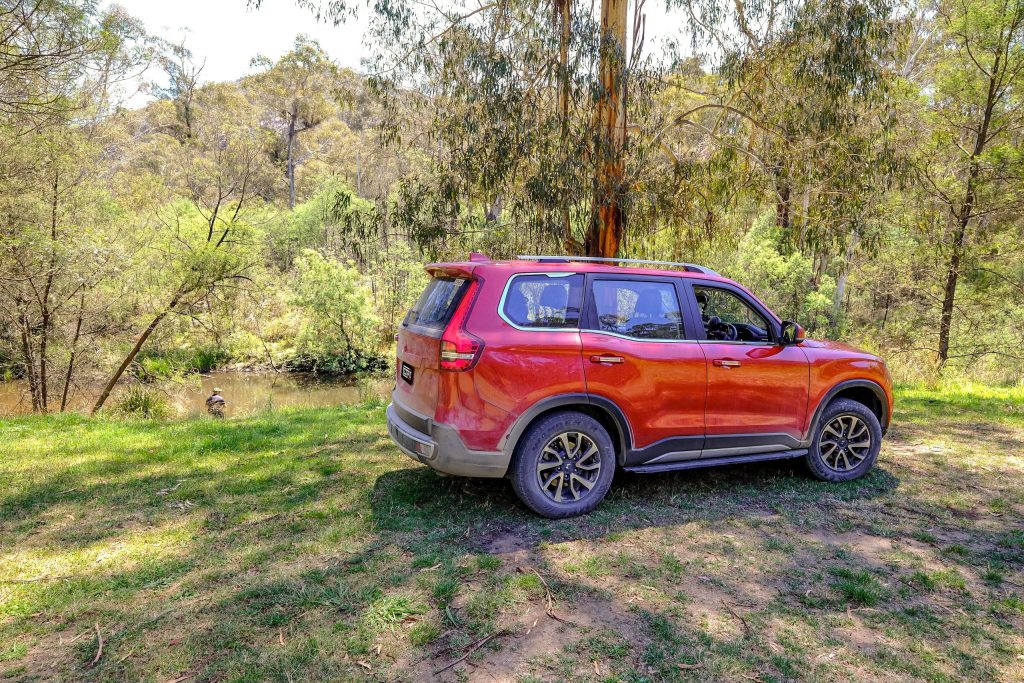
An Indian diesel engine
Both cars are powered by Mahindra’s own mHawk four-cylinder, all-alloy turbo-diesel engine. Outputs are 129kW and 400Nm, slightly less than for most competitors. The transmission is a six-speed Aisin unit driving a part-time four-wheel drive system. It also features shift-on-the-fly (up to 80km/h) and a low-range transfer case, bolstering Mahindra’s claim to be a serious off-road machine.
Also welcome is a self-locking mechanical rear differential and a brake-locking differential. Mahindra’s 4XPLOR terrain system gives the driver the option of Normal, Snow, Mud & Ruts and Sand modes.
Towing capacity is also a little less than most of the competition, being rated at 2500kg.
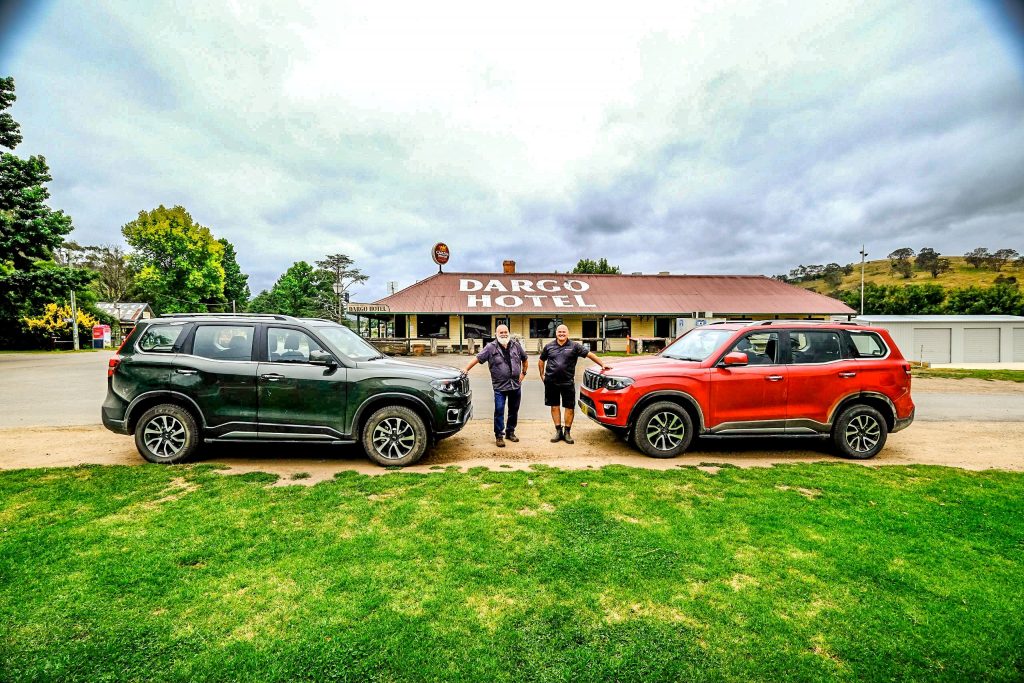
On the road. And off.
Being a launch, we couldn’t spend as much time in the Scorpio as we might have liked, but overall, we were impressed with its competence.
There is sufficient power and torque to take off with alacrity and keep up with surrounding traffic. Push the engine to the higher ends of its rev range (it’s red-lined at 3500rpm) and it does get a little loud. And it’s never particularly quiet even at lower revs.
We found the steering to be disconcertingly light at low speeds, although it does improve a little at higher speeds, but never becomes as communicative as we would like. The rear-view camera is quite grainy, as is the Z8L’s front-facing camera. We were most surprised to find that we could activate the forward-facing camera when on the move – we can’t think of another system that doesn’t deactivate the camera unless stationary or in reverse, due to the obvious distraction such a camera creates.
The suspension set-up can feel a little fidgety over broken surfaces, but large potholes are well absorbed and body roll is kept to a minimum.
The Scorpio is fitted with a double wishbone at the front and Watt’s link at the rear, in common with many body-on-frame SUVs. It proved comfortable and compliant on road and off. Adding to its ability is Frequency Dependent Damping, keeping the car composed over a single bump with high damping force, but also delivering low damping force for a comfortable ride on bumpier roads. This was comprehensively demonstrated on a very fast circuit of rutted and dusty off-road track.
Off-road, the Scorpio proved remarkably capable, although the self-locking mechanical rear differential occasionally thumped into action quite noticeably.
The very good approach, departure and breakover angles all contributed to us not getting stuck at any time.
We suspect that Mahindra has targeted the Scorpio’s off-road ability over its on-road attributes, but the compromise will be acceptable to most. Of some concern, the 20-litre AdBlue tank looks exposed, sitting as it does behind the passenger side rear wheel and protected only by a piece of plastic.
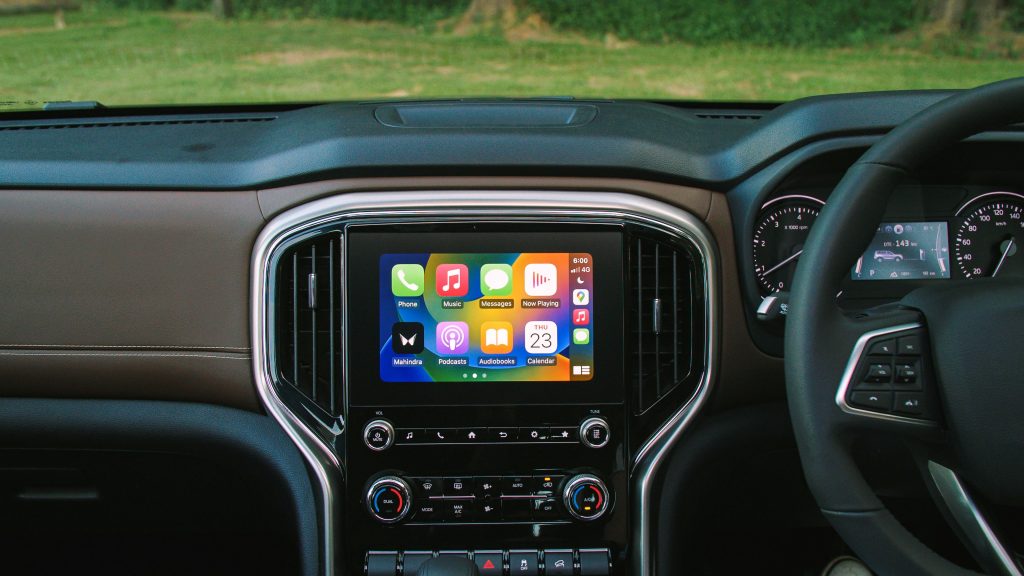
Safety: simply not good enough.
We understand the need to trim features in order to come up with a headlining price, but we don’t agree that safety features are acceptable omissions.
The Scorpio has absolutely no active safety features. It has scored a five-star rating in the less strict GNCAP (Global NCAP) test, but would certainly not score so highly under the more stringent ANCAP protocols.
There is no autonomous emergency braking (we’re told it will come with a mid-life update), which is hardly surprising since AEB will be mandatory on all new vehicles sold from 1 March 2025.
The Scorpio gets front, side and curtain airbags, but the side curtain airbags fall short of reaching the back of the rear windows. There are also rear parking sensors, reversing camera and a tyre pressure monitoring system. The Z8L adds front parking sensors and the previously mentioned forward-facing camera.
Also missing from the safety list is Lane Keep Assist (although this, too, will be mandatory in 2025), Blind Spot Monitoring, Lane Departure Warning, Forward Collision Warning, Rear Cross Traffic Alert, Reverse Autonomous Braking, Adaptive Cruise Control and Traffic Sign Recognition.
That’s an awfully long list of safety equipment that Scorpio buyers are foregoing.
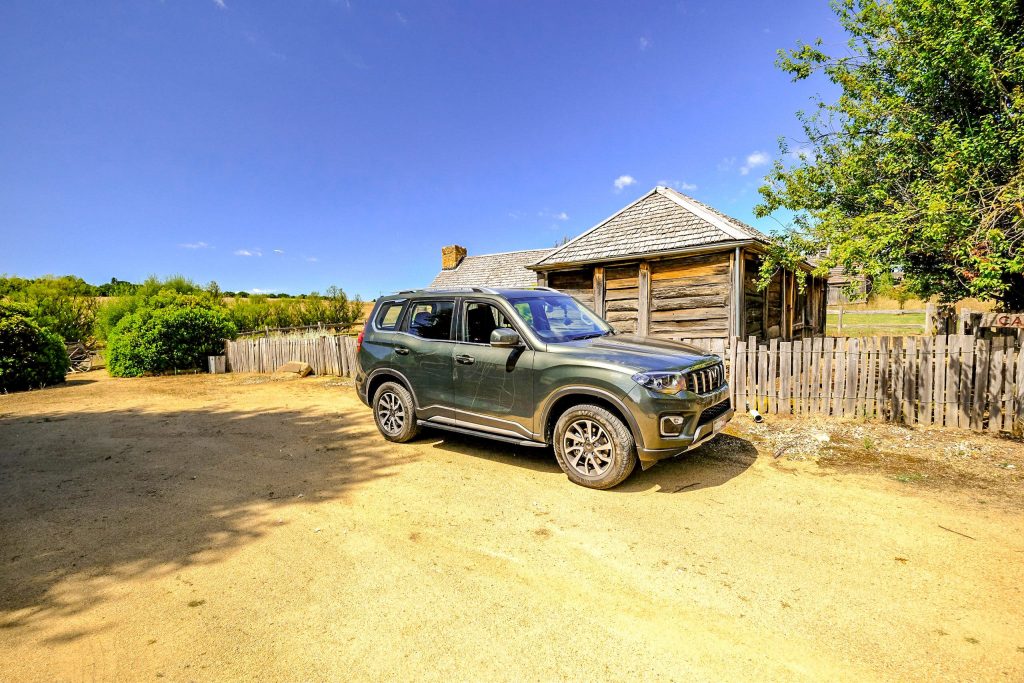
To buy. Or not to buy.
For most buyers, the price will be very hard to walk away from. Those on a limited budget now have an attractive option that means they can look at a brand-new vehicle, rather than a one-to-two-year-old second-hand vehicle. Factor in a seven-year warranty, and it’s easy to see how buyers will be seduced, and willing to overlook some of the shortcomings.
Unfortunately, those in the market for a seven-seater will have to wait for perhaps two years, as will buyers who aren’t willing to compromise on safety.
